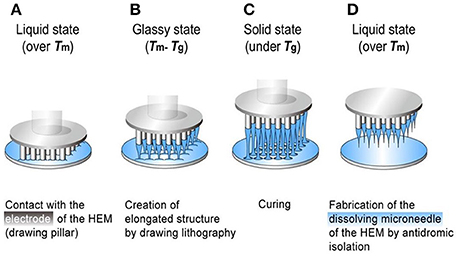Microneedles
Microneedles (MNs) are small micron-sized needles which whenapplied
on the skin breaches the SC to create microchannels throughthe skin thereby
assisting drug delivery. Drug can be deliveredby variousmodes using these
techniques.
These modes are:
(a) piercingan array of solidmicroneedles into the skin followed
by application of adrug patch at the treated site
(b) coating drug ontomicroneedlesand inserting them into the skin
for subsequent dissolution of the coateddrug within the skin
(c) encapsulating drug within biodegradable, polymericmicroneedles
followed by insertion into the skin for controlleddrug release and
(d) injecting drug through hollow microneedles. The microchannels
thus created help topically applied drugmolecules to by pass the SC which is
the major rate limiting barrier for transdermal permeation.Moreovermicroneedles
areminimally invasiveand painless as they do not penetrate up to the papillary
dermis wherenerve endings are situated.

Good content ....well done
ReplyDeleteWell done👍👍👍
ReplyDeleteWow a good content ...helped alot ✌
ReplyDeletenice
ReplyDelete